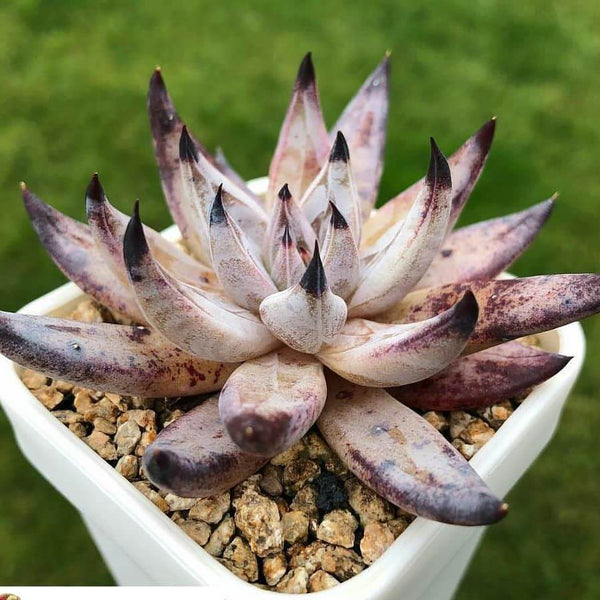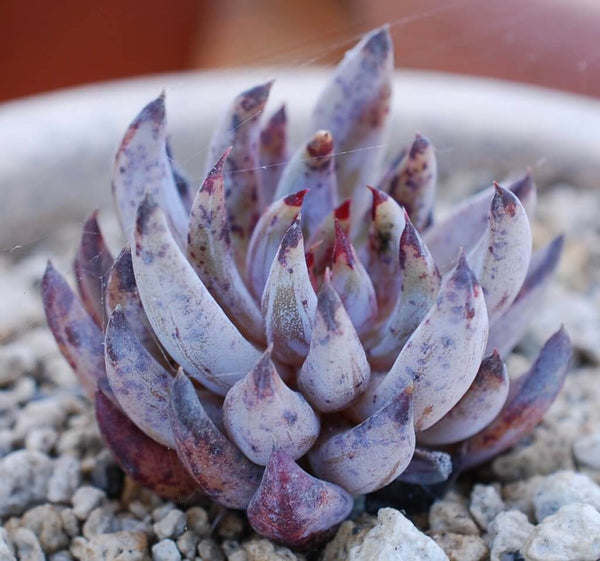Echeveria unguiculata - 20 seeds
Echeveria unguiculata is a small, rosette-forming succulent plant up to 4 inches (10 cm) in diameter. The leaves are curved, lanceolate, narrow, up to 2 inches (5 cm) long and 0.4 inches (1 cm) wide, gray with violet shading, and small red or black tip. The stem is up to 2 inches (5 cm) long. Flowers are pink to orange (outside) and orange (inside) on a up to 20 inches (50 cm) long stem.
HOW TO GROW?
1. Sterilize substrate (3+ minutes in a microwave or 50 mins in an oven)
2. Planters should be about 1.5 inches deep. Fill a container with good draining soil. Good drainage is essential; 50% regular potting soil with 50% coarse sand, perlite, or pebbles (~0.15 inch)
3. Echeverias have tiny seeds that should not be covered with soil. They germinate best at 18-20 °C temperatures.
4. Equally Water the substrate with water - place a piece of a napkin on top of the substrate and slowly pour the water over it.
5. Let the container soak up water for 5 minutes. Leave the container to drain out the water surplus.
6. Spread the seeds over the substrate, leave some space between them.
7. Put the whole container into a zip bag to keep humidity
8. Avoid exposing to direct sunlight, but provide them with light - place them in some bright place.
9. The germination process usually starts within four days – two weeks
10. Start opening the container gradually so that the seedlings can get used to the new air conditions. Seedlings need some moisture; the substrate shouldn’t be dry, but don’t overwater. They need an ample amount of light – but not direct sunlight
11. Repot them when you notice that seedlings are space-limited
12. Examine pots daily for fungus infection. Treat with fungicide if the infection appears
Light: Full sun. Perfect for a sunny window.
Water: Water during the summer and spring, making sure drainage is immaculate. Reduce water in the winter to monthly.
Temperature: Prefers average summer temps (65ºF/18ºC – 70ºF/21ºC). In winter, cool to 50ºF/10ºC.
Soil: A well-drained succulent mix, with an ideal pH of around 6.0 (slightly acidic).
Fertilizer: Feed with a controlled-release fertilizer at the beginning of the season or weekly with a weak liquid solution. Use a balanced 20-20-20 fertilizer at 1/4 strength on mature plants and a fertilizer with less nitrogen on young plants.




